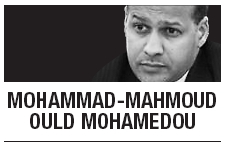GENEVA ― As post-revolution Libya looks ahead, Iraq looms as a perilous example. After 42 years of dictatorship, Libya, like Iraq in 2003 after the fall of Saddam Hussein, needs more than wishful thinking to become a vibrant democracy. It needs organized state-building in Tripoli ― and realistic policymaking in Western capitals.

Successful transitions depend from the start on factors that are still crucially missing in Libya ― a relatively cohesive leadership, an active civil society, and national unity. Without these, Libya will most likely fail to find its footing and, much like post-Saddam Iraq, suffer from persistent political division and volatile civil disorder, in addition to a multifaceted array of geopolitical pressures.
Avoiding that outcome presupposes a strong political center. But, from the start of the uprising in February 2011, Libya has been politically atomized. It lacks the sort of civil society that could have led the uprising and planted the seeds for post-authoritarian politics, as was the case in Tunisia and (more problematically) Egypt.
Libya’s transition was arguably further impeded by NATO’s intervention, as the rapid shift from a spontaneous popular uprising to an elite-led and externally supported movement prevented the revolution from following the linear course seen in Tunisia and Egypt. Thus, despite substantial international support, the Libyan National Transitional Council (NTC) still lacks the level of consensus needed to form a viable government.
The NTC has suffered regular internal disputes, and its membership and functioning are shrouded in secrecy. Last July, the council’s military leader, Abdul Fatah Younis al-Obeidi, was assassinated under ambiguous circumstances. Then, in November, the NTC’s military prosecutor named its own former deputy prime minister, Ali al-Issawi, as the prime suspect. The conflict and opacity surrounding the case are telling signs of the country’s political fragility since Colonel Moammar Gadhafi’s demise.
Libya should take note of how Iraq’s post-Saddam transition has featured ceaseless power struggles and infighting. In 2010, Iraqi political leaders’ machinations ― personal, as well as tribal and sectarian ― left the country without a government for 249 days.
Today, Libya appears set to undergo similar struggles, owing mostly to the presence of powerful political actors outside the NTC. The 20,000-strong Tripoli Military Council, for example, which controls the capital, has been consistently independent of the NTC, and forced out its first foreign minister, Mahmoud Jibril.
The rival Tripoli’s Revolutionists Council, meanwhile, has warned that it would unseat any incoming government should its demands for representation not be met. The NTC also faces pressure from Libya’s Berbers, who comprise 10 percent of the population and have already taken to the streets to denounce the new political arrangements and to reject any system that does not accommodate their culture and language.
This dissension may well be compounded by two additional factors. The first is major cities’ competing sense of entitlement to the fruits of the revolution: Misurata, where Gadhafi’s body was displayed; Tripoli, which hosted the liberation ceremony; and Zintan, which is holding Gadhafi’s son, Saif al-Islam el-Gadhafi, prisoner. And all of them, like most Libyans, share the unrealistic expectation that their newfound freedom will somehow solve their socio-economic woes.
The second complicating factor is that political power now lies in the hands of competing militias. The internecine rivalries that began in earnest last November between fighters from Zawiya and Warshefana, and among Tripoli’s various factions, will be difficult to defuse, as the thowar (revolutionaries) have refused repeated calls by the NTC to disarm. Tripoli is in danger of becoming like Baghdad circa 2005, with different groups controlling turf and instituting a clientelist neighborhood political economy.
Inter-urban competition and the militias’ defiant independence are all the more worrisome because Libya is awash in weapons, with unguarded caches, abandoned stockpiles, looted ammunition depots, and thousands of shoulder-fired heat-seeking surface-to-air missiles. Last November, Mokhtar Belmokhtar, the commander of al-Qaida in the Islamic Maghreb (AQIM), confirmed that AQIM seized the opportunity to secure some of this arsenal when the revolution started.
Meanwhile, the aims of France, the United Kingdom, the United States, the Arab League, NATO, and Qatar, all of which have played a role in Libya’s transformation, are unlikely to be the same. In other words, external pressures, too, are likely to pull Libya in several different directions, which will only further delay an autonomous and sustainable state-building process.
Gadhafi left behind a booby-trap. The collapse of authoritarian rule created a security vacuum with no functioning state apparatus, making Libya highly exposed to international influence, often in the service of corporate interests. To avoid repetition of the costly mistakes made in Iraq, Libya will require adroit leadership that can elaborate a compelling new national vision with which to unify competing authorities, rein in undisciplined militias, and minimize the country’s strategic vulnerability.
By Mohammad-Mahmoud Ould Mohamedou
Mohammad-Mahmoud Ould Mohamedou is the head of the Middle East and North Africa Program at the Geneva Center for Security Policy and a visiting professor at Geneva’s Graduate Institute of International and Development Studies. ― Ed.
(Project Syndicate/Europe’s World)








